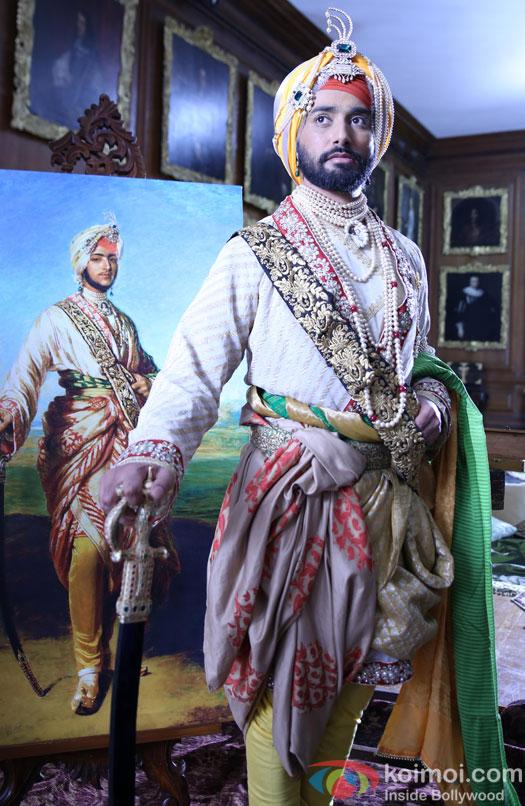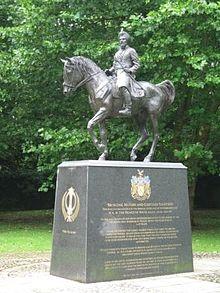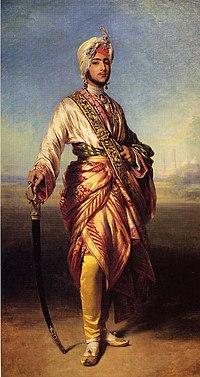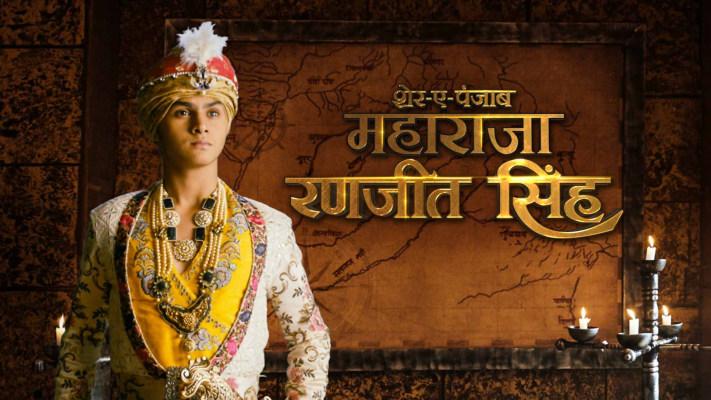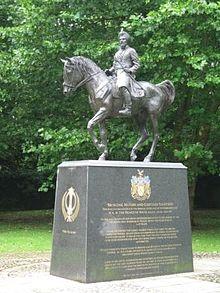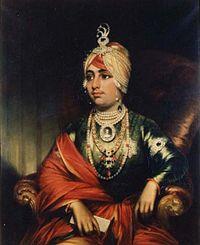Rewards and payments Of Maharanjit Singh:
A well defined system of reward and punishment was enforced to maintain discipline and morale. The system of fasli or six monthly payment, or payment through jagirs was later replaced by regular monthly payment in cash. Rates of pay ranged between Rs 400500 for a general, Rs 1725 for an infantry soldier and Rs 2226 for a horseman per month, including, in the last case, maintenance of a horse and accoutrements. European officers received much higher salaries. Ventura and Allard were, for instance, each paid Rs 25,000 per annum, in addition to certain jagirs. There was no provision for retirement benefits, but allowances were sometimes sanctioned from out of the dharamarth or religious charities fund to those permanently disabled on active service or to the dependants of those killed in action. Distinguished service in peace or war was also recognized through the award of civil and military titles, bestowal of khill'ats or robes of honour and grant of jagirs or landed estates.
There were three grades of khill'at marked by the number, variety and quality of the garments, ornaments and weapons comprising each of them. Military titles were highsounding Persian expressions, which the recipients and their bards and ushers could use before their names, such as HizbariJang (the lion of battle), ZafarJang Bahadur (victorious, brave in war) Samsam uddaulah (sharp sword of the State), Shuja' uddaulah (valour of the State), Tahavurpanah (asylum of bravery), and so on. The titles of Raja and Diwan, sparingly bestowed, were essentially for distinguished service on the civil side. For military officers, the title of Sardar was considered one of considerable distinction.The noted generals,like General Sardar Gurmukh Singh Lamba were awarded title of izat-i-Sardari.Sardar was wounded fifteen times and his portrait painting is displayed at "Central Museum" Lahore at serial D-40 with caption.
Towards the end of his reign or, to be more exact, on the occasion of the marriage of Kanvar Nau Nihal Singh in March 1837, Ranjit Singh instituted an Order of Merit named Kaukabi-Iqbali-Panjab (Star of the Prosperity of the Punjab). It was a gold medal, 2.25 inches across with five large and five small pointed branches issuing outwards alternately from a roundish centre bearing a likeness of the Maharajah in bust on one side, and his name on the other. It was meant to be worn round the neck suspended on a gold and scarlet riband passing through a ring on top of the semiglobular head of the star.
The kaukabwas of three different classes representing the three grades of the Order, distinguished by the size and quality of the inset precious stones. Star of the first class, meant to be awarded only to members of the royal family and very few distinguished chiefs and nobles for their proven devotion and fidelity to the person of the Maharajah and his House, was ornamented with a single large diamond. The Order of the second grade was bestowed upon loyal courtiers, governors of provinces, generals and ambassadors in recognition of political services. It had a diamond (of smaller size) and an emerald on it. The Order of the third grade, having a single emerald, was awarded to military officers of the rank of colonel, major or captain for bravery, resourcefulness, alertness and faithfulness; to civil servants for distinguished administrative ability and honesty; and to others enjoying greater confidence of the sovereign. Bestowal of the kaukabswas were accompanied by appropriate khill'ats and titles for the awardees.
Rewards and payments Of Maharanjit Singh:
A well defined system of reward and punishment was enforced to maintain discipline and morale. The system of fasli or six monthly payment, or payment through jagirs was later replaced by regular monthly payment in cash. Rates of pay ranged between Rs 400500 for a general, Rs 1725 for an infantry soldier and Rs 2226 for a horseman per month, including, in the last case, maintenance of a horse and accoutrements. European officers received much higher salaries. Ventura and Allard were, for instance, each paid Rs 25,000 per annum, in addition to certain jagirs. There was no provision for retirement benefits, but allowances were sometimes sanctioned from out of the dharamarth or religious charities fund to those permanently disabled on active service or to the dependants of those killed in action. Distinguished service in peace or war was also recognized through the award of civil and military titles, bestowal of khill'ats or robes of honour and grant of jagirs or landed estates.
There were three grades of khill'at marked by the number, variety and quality of the garments, ornaments and weapons comprising each of them. Military titles were highsounding Persian expressions, which the recipients and their bards and ushers could use before their names, such as HizbariJang (the lion of battle), ZafarJang Bahadur (victorious, brave in war) Samsam uddaulah (sharp sword of the State), Shuja' uddaulah (valour of the State), Tahavurpanah (asylum of bravery), and so on. The titles of Raja and Diwan, sparingly bestowed, were essentially for distinguished service on the civil side. For military officers, the title of Sardar was considered one of considerable distinction.The noted generals,like General Sardar Gurmukh Singh Lamba were awarded title of izat-i-Sardari.Sardar was wounded fifteen times and his portrait painting is displayed at "Central Museum" Lahore at serial D-40 with caption.
Towards the end of his reign or, to be more exact, on the occasion of the marriage of Kanvar Nau Nihal Singh in March 1837, Ranjit Singh instituted an Order of Merit named Kaukabi-Iqbali-Panjab (Star of the Prosperity of the Punjab). It was a gold medal, 2.25 inches across with five large and five small pointed branches issuing outwards alternately from a roundish centre bearing a likeness of the Maharajah in bust on one side, and his name on the other. It was meant to be worn round the neck suspended on a gold and scarlet riband passing through a ring on top of the semiglobular head of the star.
The kaukabwas of three different classes representing the three grades of the Order, distinguished by the size and quality of the inset precious stones. Star of the first class, meant to be awarded only to members of the royal family and very few distinguished chiefs and nobles for their proven devotion and fidelity to the person of the Maharajah and his House, was ornamented with a single large diamond. The Order of the second grade was bestowed upon loyal courtiers, governors of provinces, generals and ambassadors in recognition of political services. It had a diamond (of smaller size) and an emerald on it. The Order of the third grade, having a single emerald, was awarded to military officers of the rank of colonel, major or captain for bravery, resourcefulness, alertness and faithfulness; to civil servants for distinguished administrative ability and honesty; and to others enjoying greater confidence of the sovereign. Bestowal of the kaukabswas were accompanied by appropriate khill'ats and titles for the awardees.



